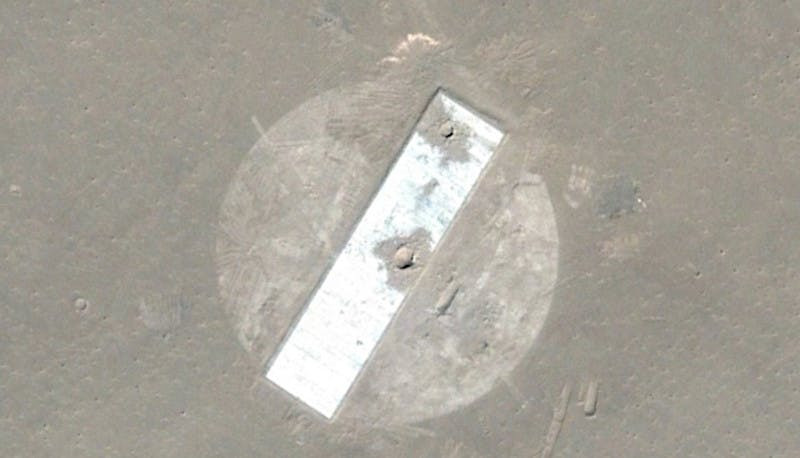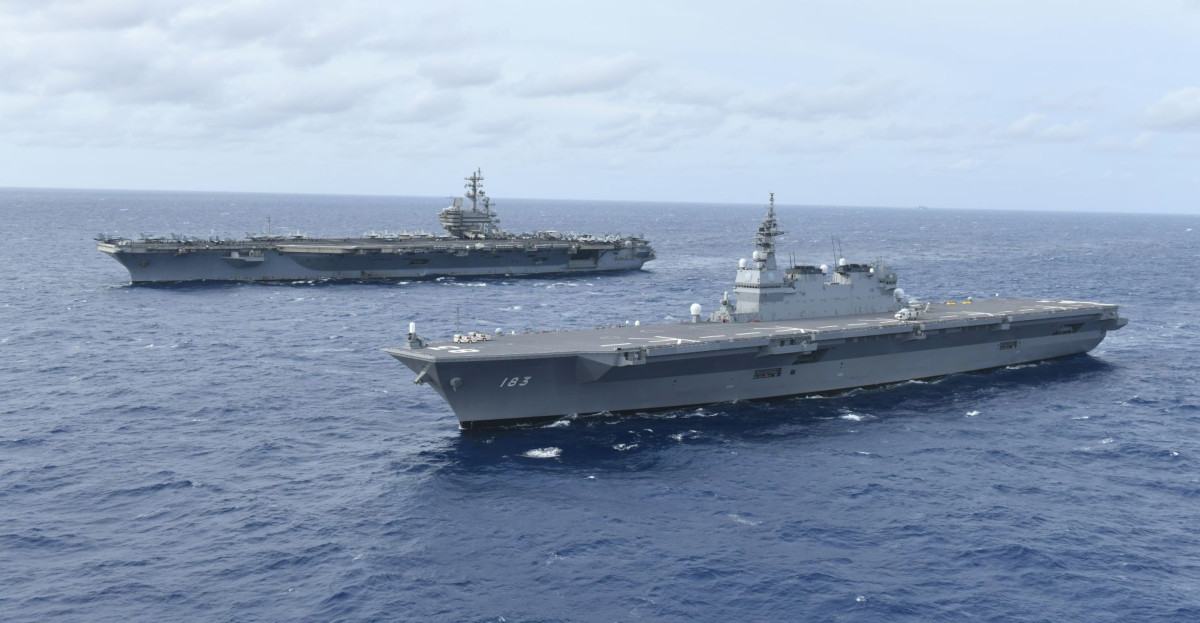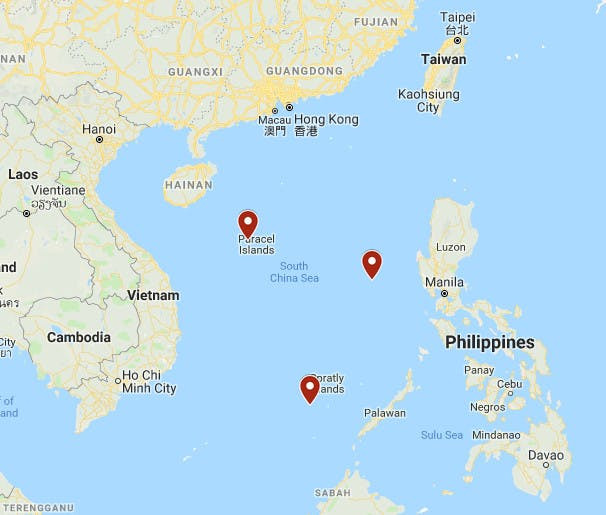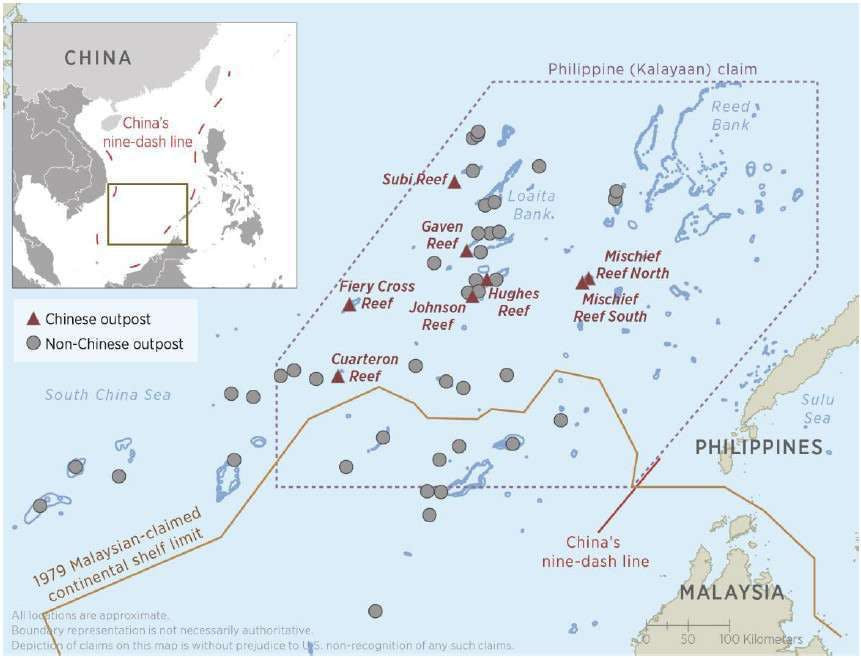China has reportedly carried out at least one anti-ship ballistic missile test in the hotly contested South China Sea as part of a larger exercise. If true, it would be the first time the Chinese military has carried out this kind of activity in this region that we know of and it would represent a significant escalation in that country’s already aggressive efforts to assert its claims over this highly strategic portion of the Pacific Ocean.
NBC News was first to report the development, citing two unnamed U.S. officials, on July 1, 2019. NBC‘s sources did not say what type of missile or missiles were involved or what type of targets they struck at the end of their flight. Neither the Chinese nor the U.S. government have officially confirmed the test, which reportedly occurred over the weekend. However, China did issue Notices to Airmen (NOTAM) for two specific areas in the South China Sea, warnings often associated with missile launches and military exercises. These NOTAMs were in effect between June 30 and July 1, 2019.
One of the NOTAMs covered a wide area stretching from the Chinese island of Hainan to contested Paracel Island chain, including China’s outpost on Woody Island, while the other was a box was much further to the south, but north of the disputed Spratly Islands. Their respective positions suggested that Chinese forces had launched a missile from the mainland, with the first exclusion zone being in place in case the missile failed during its boost phase and fell into the ocean, and it then landed downrange in the Pacific Ocean.
China’s People’s Liberation Army Rocket Force (PLARF) has at least two ballistic missiles that reportedly have warheads with sufficient maneuverability to engage large, relatively slow-moving ships, such as aircraft carriers. These are the DF-21D medium-range ballistic missile (MRBM) and the DF-26 Intermediate Range Ballistic Missile (IRBM).
In April 2018, there were reports, based on commercial satellite imagery, that suggested there was a previously unknown PLARF base on Hainan island, which would also fit with NBC‘s report and the publicly available NOTAMs. Either DF-21Ds or DF-26s would have sufficient range to reach the Spratlys from Hainan. China is also in the process of developing shorter range anti-ship ballistic missiles, but these systems would lack the range necessary to hit targets in the South China Sea from the Chinese mainland.
If China has fired DF-21Ds or DF-26s into the South China Sea near the Spratly Islands it would be the first known instance of the PLARF using either missile against a maritime target. The Chinese have previously fired ballistic missiles at broadly carrier-shaped fixed targets in the Gobi Desert.
It is possible that this test was more general and was simply intended to demonstrate a basic ability to fire a missile from the Chinese mainland at a particular spot in the South China Sea. This could still provide important data for future test launches against more representative targets.

This would also represent a logical progression from a missile exercise in January 2019, in which PLARF DF-26 units mobilized on short notice in the Gobi Desert and Tibetan Plateau regions, explicitly in response to the U.S. Navy’s Arleigh Burke-class destroyer USS McCampbell sailing through the disputed Paracel Islands in the South China Sea. This was clearly meant to show China’s ability to threaten hostile ships using ballistic missiles from sites safely within its interior. The PLARF did not actually fire any ballistic missiles in that instance, though.
The video below from China’s state-run CCTV shows clips from the DF-26 exercise January 2019.

This new anti-ship ballistic missile test could have been a similar response to the U.S. Navy and Japan Maritime Self-Defense Force conducting combined operations in the South China Sea earlier in June 2019. This notably involved both the American Nimitz-class aircraft carrier USS Ronald Reagan, and her associated strike group, as well as the Japanese “helicopter destroyer” JS Izumo.
In 2018, Japanese officials had finally admitted that they had designed the Izumo-class from the outset as aircraft carriers capable of supporting short takeoff and vertical landing-capable jets. Japan is now looking to fully convert the ships to accommodate F-35B Joint Strike Fighters. China has been a vocal critic of Japan’s efforts to increase its military capabilities and even potentially amend its pacifist constitution to allow the Japan Self-Defense Force to conduct more expansive military activities.

In March 2019, the U.S. Navy’s amphibious assault ship USS Wasp had also arrived in the Philippines to take part in a major exercise carrying an unusually heavy load of F-35Bs. Wasp subsequently appeared off Scarborough Shoal, situated to the northeast of the Spratlys. China and the Philippines both claim ownership of the shoal and the waters around it, which has led to serious altercations in the past.
Scarborough Shoal also forms one point of a “strategic triangle” China has been working to secure within the South China Sea in order to better assert its territorial claims. The other two points are Woody Island to the north and the Spratlys further south. Since 2014, the Chinese have been steadily expanding and improving a large constellation of islands and man-made outposts throughout the South China Sea.
At the same time, China has also been increasingly deploying surface-to-air and shore-based anti-ship missiles, among other military hardware, to these outposts, as part of a broader anti-access and area denial strategy.

The ability to employ anti-ship ballistic missiles against targets in the South China Sea from the Chinese mainland only adds to these defensive layers. Tucked further inside China’s own territory, these weapons could be less vulnerable to pre-emptive or counter-strikes from any opponent during a crisis, too.
Adding anti-ship ballistic missiles to China’s existing anti-ship cruise missiles defenses in the region would also make the full threat picture more disparate, making it more challenging for opponents to fully defend themselves. Spotting and detecting ballistic missiles, let alone trying to intercept them, is a very different affair from detecting and engaging low-flying air-breathing cruise missiles, a reality the U.S. military made abundantly clear in its most recent Missile Defense Review.
Of course, it is important to note that there is still no indication that China has demonstrated the ability to hit a target representative of even a large moving ship, such as an aircraft carrier, with a ballistic missile, let alone do it reliably. It is similarly unclear whether the People’s Liberation Army has the sensor and communications networks to spot ships and then feed useful targeting information to PLARF units hundreds or even thousands of miles away.
But the reported recent missile test in June 2019, as well as the DF-26 exercise earlier in the year, certainly show that the People’s Liberation Army is still interested in working to develop this capability, or at least making it appear this way. There have also been reports that the Chinese may be looking to develop air-launched anti-ship ballistic missiles for even greater flexibility. If nothing else, Beijing definitely has no interest in ceding any of its territorial claims in the South China Sea.

In addition, the Chinese military’s deployment of new capabilities in and around the region has coincided with increasingly aggressive maritime patrols to force civilian and military vessels away from the areas that China claims. In September 2018, the People’s Liberation Army Navy’s Type 052C Luyang II-class destroyer Lanzhou almost collided with the U.S. Navy’s Arleigh Burke-class destroyer USS Decatur near Gaven Reefs in the Spratly Islands.
The United States and China separately remain locked in what has been a particularly bitter trade war and the two countries have also seen increasing tensions over the status of Taiwan in recent months. Following a meeting on the sidelines of the recent G-20 summit in Japan, U.S. President Donald Trump and Chinese President Xi Jinping had agreed to hold off on a new round of tariffs and restart negotiations to end the trade dispute. Trump has also moved to ease sanctions against Chinese telecommunications and consumer electronics giant Huawei, which has been a particularly tense trade issue for the two countries.
But if it is true that the PLARF has started test firing ballistic missiles into the South China Sea, it would seem that however tensions may or may not be easing on the economic front, Beijing still sees no reason to back down with regards to expansive territorial claims in the region.
Contact the author: joe@thedrive.com
